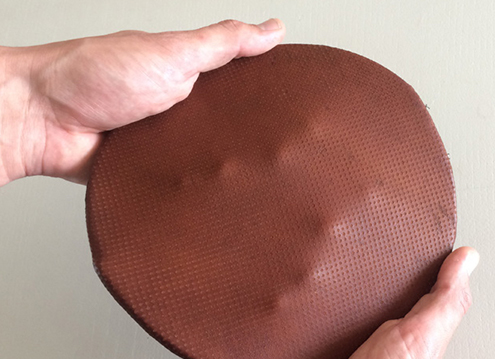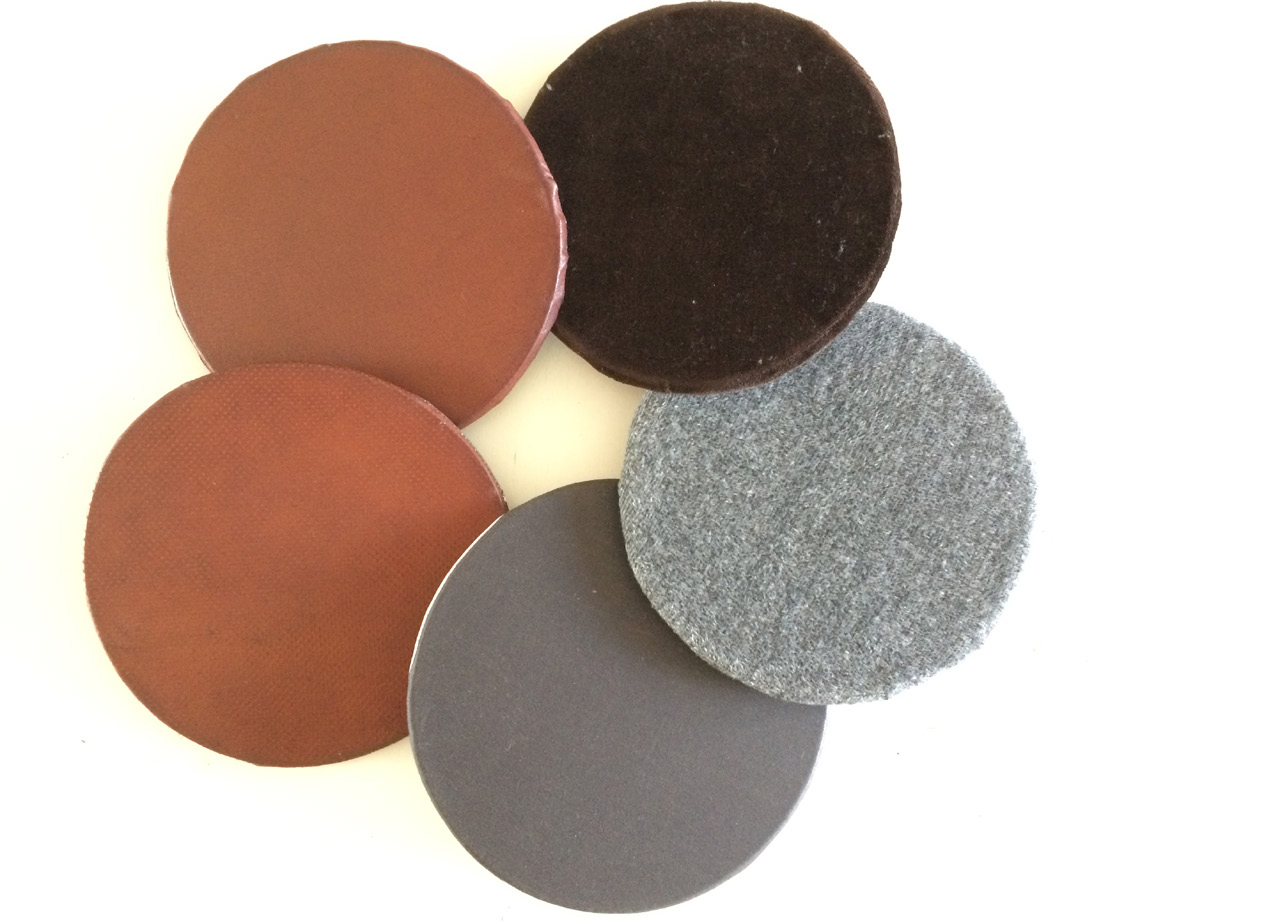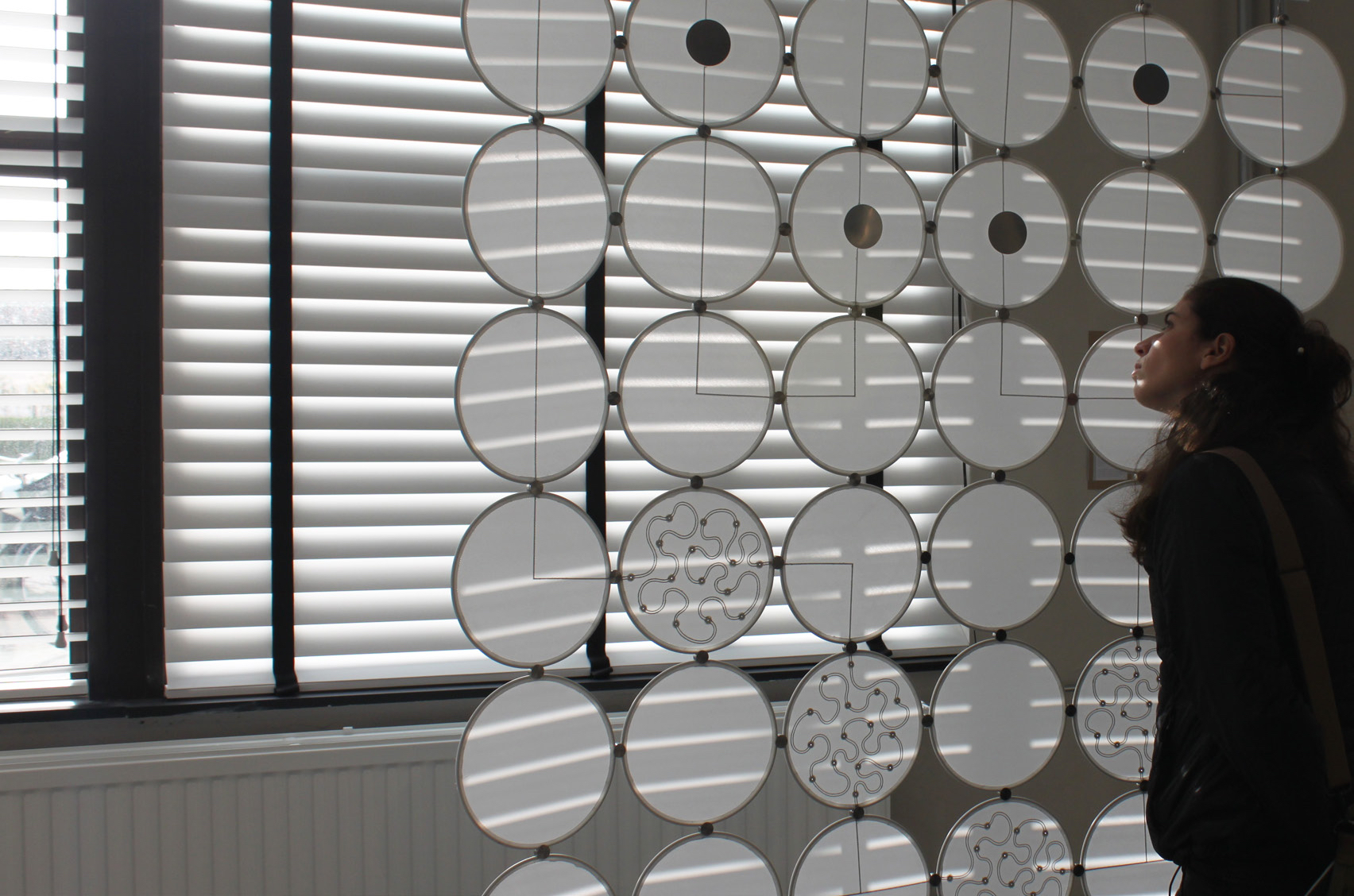Designing with smart materials
The method used to analyze and explore the smart material qualities is Material Driven Design. This approach lets the designer analyze a material on four different levels:
- Sensorial qualities,
- What meanings are attributed,
- What emotions are elicited
- What Performances are triggered
Ultimately the end design results in a superior product in which the interactions with the product are triggered by the material in which the product is embodied.
Inspired by Spacemotion, the flexible disc was created from leather and a textile, hereby inviting explorative interactions like bending, twisting and pushing.
Through material exploration, a series of textile and leather discs was created to find the ultimate material to support the interactions of bending, twisting and pushing. Each interaction creates a different response of Spacemotion: Music, light, or a sequence of tones.
The final design is a flexible, wireless disc that is designed as a smart material system. The user is challenged to explore and follow his curiosity. He becomes the architect of his atmosphere in his home environment. The disc senses several interactions that all have a different output via Spacemotion in the shape of sound and light. By interacting and exploring, the user can craft his expression into the sensorial output of Spacemotion. In perspective, the disc is essentially an interface platform. In this case it is Spacemotion being controlled. But in fact, any device can be tangibly controlled. The floppy disc Redefines man-machine interaction.
The goal of the project
The goal of this graduation assignment was to explore the world of smart materials and to design an example application that shows the added value of smart materials.

Kaspar Jansen
- +31 (0) 152786905
- k.m.b.jansen@tudelft.nl
-
Room B-3-170
Researchers
- Prof. K.M.B. Jansen
- Dr. E. Karana
- Niels Stamhuis (Graduate)



